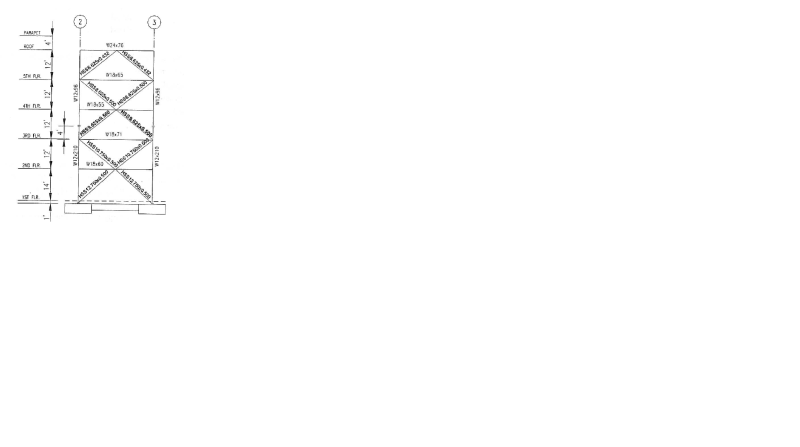senthil83
Mechanical
- Jun 26, 2012
- 66
hi
we have been using x bracing in our support structure,
refer the attached sketch
where the support structure was designed as SCBF(special concentric braced frames)
since there is no length at x-bracing intersection for making gusset conn, we have
made direct pipe to pipe welding at intersection.
The pipe to pipe connection has been designed as per sec.K of AISC 360-10 for
the actual tension/compression brace force coming from staad analysis.
But the client asking to consider higher forces (1.6fy.Ag) as per aisc 341-05 for designing this conn.
we have already designed corner gusset connection as per aisc 341-05 for higher forces 1.6.fy.ag.
since there is no gusset / reduction in gross area I think we can design the intersection only for actual
staad analysis forces.
please clarify.
thanks
SENTHILKUMAR.B
we have been using x bracing in our support structure,
refer the attached sketch
where the support structure was designed as SCBF(special concentric braced frames)
since there is no length at x-bracing intersection for making gusset conn, we have
made direct pipe to pipe welding at intersection.
The pipe to pipe connection has been designed as per sec.K of AISC 360-10 for
the actual tension/compression brace force coming from staad analysis.
But the client asking to consider higher forces (1.6fy.Ag) as per aisc 341-05 for designing this conn.
we have already designed corner gusset connection as per aisc 341-05 for higher forces 1.6.fy.ag.
since there is no gusset / reduction in gross area I think we can design the intersection only for actual
staad analysis forces.
please clarify.
thanks
SENTHILKUMAR.B

